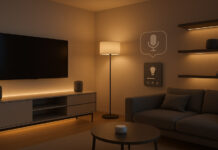Architecture is a symphony of aesthetics, functionality, and innovation, and as we move deeper into the 21st century, it is evident that doors and windows are no longer mere functional elements. They have become powerful artifacts of design and sustainability, influencing modern living spaces and skylines. When given new life through redesign, these components have the potential to bridge the gap between the past and the future in architectural environments. New trends in door and window design aim to balance sustainability and aesthetics, ushering in a revolutionary era of building and architecture.
Sustainability and Eco-Conscious Materials
Over the past few years, the world of architecture has welcomed sustainability as a core theme. The increasing emphasis on eco-friendly living has transformed the focus on door and window designs, with recyclable and renewable materials becoming the first preference. Wood from sustainably harvested forests, low-carbon footprint aluminum, and thermally effective materials have emerged as the most sought-after options in contemporary architecture.
These materials not only help in lowering environmental impact but also serve fundamental functions in enhancing energy efficiency in buildings. Innovative glazing technologies, including triple-glazed and low-emissivity glass, are being integrated with utmost accuracy to ensure that windows reduce heat exchange.
Consequently, these design trends in door and window help in lowering reliance on artificial heating and cooling systems, thereby diminishing energy consumption. In addition, architects are focusing on production processes that prioritize material recycling at the end of their life cycle. Aluminium, known for its toughness and light weight, is increasingly being utilised with a high percentage of post-consumer recycled content. These methods demonstrate the industry’s resolve to convert to a circular economy, in which items can be reused without wasting natural resources.
Smart Integration: The Age of Intelligent Windows and Doors
One of the hallmark features of contemporary architecture is its incorporation of technology. Smart windows and doors with automatic capabilities are no longer fantasies of the future; they are an everyday reality that is changing the way we engage our living environments.
These smart systems use Internet of Things (IoT) technologies to turn traditional doors and windows into smart entities. Technologies like temperature control, light enhancement, and security improvement are all controlled effortlessly through smartphone apps or voice-activated hubs. Electrochromic glass, which can modify its tint according to the level of light outside, is one such innovation in this area. Not only does this encourage energy conservation, but also the comfort and privacy of the inhabitants.
Touchless door systems, facial recognition, and biometric locks have redefined door technologies through a combination of convenience and cutting-edge security. With changing lifestyles, the combination of AI-centric features in doors and windows is likely to seamlessly integrate with the overall smart home ecosystem, thus redefining user experiences.
Aesthetic Minimalism and Expansive Views
One of the prominent trends in door and window design is the emphasis on achieving minimalist aesthetics. Large glass panels, clean lines, and minimal obstructions are becoming characteristic features of modern architecture. The need for seamless indoor-outdoor transition has made sliding and bi-fold doors fashionable, which remove the delimiters between living areas and nature.
Floor-to-ceiling windows, sometimes known as ‘picture windows,’ maximise natural light, providing the sense of enormous areas while establishing a harmonious relationship with the surroundings. Such designs are ideal for both residential and commercial applications where panoramic vision is the primary concern.
Another favored aesthetic element is the utilization of frameless glass. By dispensing with bulk frames, designers attain sleek sophistication and greater amounts of light flooding interiors. Transparent options such as these usher in modernist minimalism and appeal to the increasing desire for understated sophistication in architecture.
Tables: Enhancing Conceptual Clarity
| Technology | Energy Efficiency | Cost-Effectiveness | Durability | Applications |
| Double-Glazed Glass | Moderate | Affordable | High | Residential and Commercial Spaces |
| Triple-Glazed Glass | High | Premium Cost | Very High | Cold Climates |
| Low-Emissivity Glass | Very High | Moderate | High | Energy-Efficient Buildings |
| Electrochromic Glass | Dynamic Control | High | Very High | Smart Homes and Office Buildings |
-
Resilience and Weather Adaptability
Architectural innovations have also addressed the strength of doors and windows against climatic conditions. Areas that are usually hit by adverse weather conditions need designs that can endure heavy winds, storms, and changing temperatures.
Hurricane-resistant windows, for instance, incorporate impact-resistant glazing integrated with reinforced frames to shield homes and buildings from severe weather conditions. Likewise, insulated steel doors are gaining prominence in colder climates due to their ability to retain indoor heat efficiently.
Adding weather adaptability to designs makes buildings strong against the extremes of climate while being attractive. Combining strength with design sophistication is a reflection of the creative zeal of contemporary architecture.
-
Cultural Sensitivity in Design
As the world has become globalized, it has welcomed modernity, yet there still exists an irrevocable hold on cultural heritage. Trends in Door and window designs are balancing this by adopting the spirit of local architecture.
In South Asia, for example, jali patterns (intricate latticework) have become part of modern window designs, balancing conventional beauty with new construction. Likewise, arched windows and doors are used in minimalist frameworks under European influences.
This trend reflects how architecture respects its heritage, and each region’s historic identity is preserved while it adopts worldwide standards in design.
Future Trajectories: Looking ahead to 2032
As we go into the future, exciting innovations are on the horizon to transform door and window design. Materials that respond with self-healing properties and nanotechnology innovations may redefine resilience. Also, augmented reality can quickly enable users to visualize door and window locations accurately during the planning stages in construction.
The architectural industry is poised for breakthroughs in sustainable sourcing. Transparent solar windows are anticipated to gain popularity as alternatives to traditional windows, enabling buildings to generate their own energy. This integration of architectural elements with renewable energy technologies will revolutionize how doors and windows function—as active contributors to energy production.
Conclusion
These days, trends in doors and windows are more than just structural components; they are declarations of technology, sustainability, and design. The changing themes in their design speak to a world that is attempting to balance form and function, using technology to enrich lives while being kind to the planet. With architects pushing the boundaries ever higher, the future can only hold doors and windows that open opportunities, but also change the way we engage with our spaces and the world outside.
The complex interaction of materials, technology, and cultural influences guarantees that the future of door and window design will be as fascinating as the places in which they exist. In today’s shifting architectural scene, these aspects represent progress, sustainability, and human inventiveness.
































